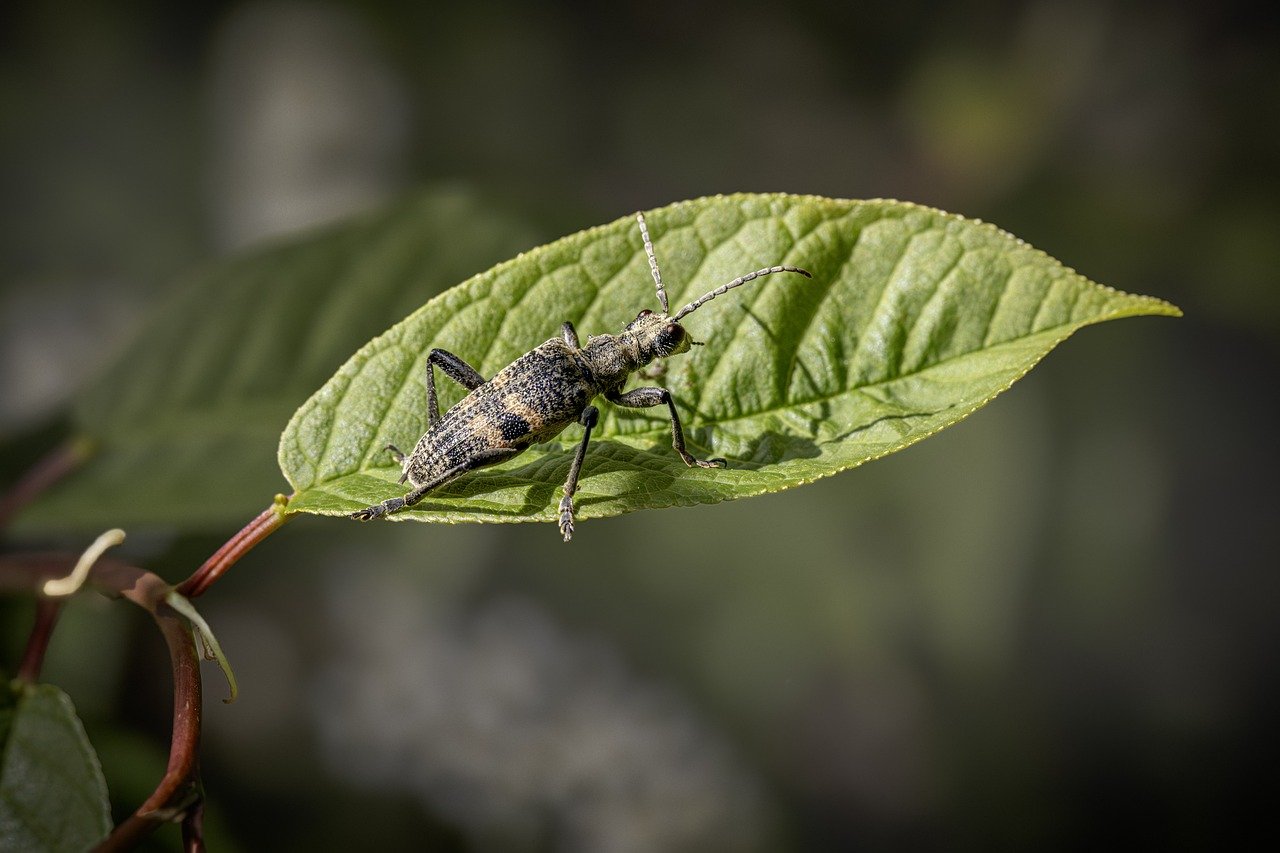The Blackspotted Longhorn Beetle (Rhagium mordax) is a species of beetle belonging to the Cerambycidae family, commonly referred to as longhorn beetles. It is widely distributed across Europe and parts of Asia, particularly in temperate forested areas. The species is named for its characteristic elongated body and long antennae, which are common features among longhorn beetles.
Physical Description:
- Size: Adults range from 12 to 22 mm in length.
- Coloration: The beetle’s body is typically dark brown to black with distinctive pale yellow or orange markings, including black spots that run along its elytra (wing covers). These spots give the beetle its common name, making it easily identifiable.
- Antennae: As with other longhorn beetles, Rhagium mordax has long, segmented antennae that are often about the same length as its body. These are used for sensing the environment, particularly in locating mates and food sources.
- Legs: Its legs are reddish-brown, providing strong gripping power as it moves across various surfaces like tree trunks or logs.
Habitat:
The Blackspotted Longhorn Beetle is typically found in deciduous and mixed forests, especially where there are large quantities of deadwood. It prefers wood that is rotting or decaying, as this serves as both a food source for larvae and an ideal place for egg-laying. In particular, species of oak, birch, and beech are commonly utilized by this beetle. Though more commonly associated with forests, they may also be found in parklands and gardens that feature older trees and dead wood.
Life Cycle:
- Eggs: The female lays her eggs in cracks or crevices of decaying wood, often choosing fallen logs or branches, but sometimes also laying in living trees that are already weakened or damaged.
- Larvae: The larvae are wood-borers, meaning they tunnel into decaying wood where they feed and develop. The larval stage can last for 2 to 3 years, depending on environmental conditions such as temperature and availability of food. Larvae are cream-colored with a cylindrical body and dark brown head.
- Pupation: After reaching full size, the larvae pupate within the wood in specially created chambers. The pupal stage lasts a few weeks to months.
- Adults: Adults emerge typically between May and August. They are most active during this time, mating and feeding on tree sap, leaves, and occasionally small insects. Their lifespan as adults is relatively short, usually a few weeks.
Behavior:
- Feeding: Adults primarily feed on sap and the tender parts of tree leaves, though they may also occasionally consume small insects. Larvae are saproxylic, meaning they feed on dead or decaying wood, making them an important part of the forest ecosystem, as they help decompose and recycle nutrients back into the soil.
- Flight: Adult beetles are capable of flight, and they can be seen during the warmer months when they are searching for mates or new areas with decaying wood for egg-laying. They are typically active during the day and are often found sunning themselves on logs or tree stumps.
Ecological Importance:
The Rhagium mordax plays a crucial role in forest ecosystems by aiding in the breakdown of decaying wood. This process recycles essential nutrients back into the environment, benefiting soil health and plant growth. By boring through deadwood, the larvae create tunnels and chambers that are later utilized by other insects and small organisms, contributing to the biodiversity of forested areas.
Distribution:
The Blackspotted Longhorn Beetle is widespread across much of Europe, from the United Kingdom and Scandinavia to Southern Europe, as well as parts of Asia, particularly in temperate regions. Its presence is closely tied to forests with abundant deadwood, making it more common in older, established woodland areas.
Conservation Status:
Currently, the Rhagium mordax is not considered a threatened species and is listed as Least Concern by conservation organizations due to its wide distribution and relatively stable population. However, habitat loss due to deforestation and the removal of deadwood from forests can negatively impact its populations, as the species is dependent on decaying wood for reproduction and larval development.
Interesting Facts:
- The Blackspotted Longhorn Beetle is often mistaken for other similar-looking beetles due to its black spots and long antennae. However, its specific pattern of spots and size makes it distinguishable from other members of the Cerambycidae family.
- This beetle is part of a larger group of longhorn beetles that are often admired for their striking appearance and their importance in woodland ecosystems.
In summary, the Blackspotted Longhorn Beetle (Rhagium mordax) is a fascinating insect that contributes to the health and biodiversity of forests. Its reliance on decaying wood for reproduction and larval development makes it an important part of the natural recycling process in woodland habitats, where it plays a key role in decomposing dead trees and logs.
Views: 406
Subscribe to the newsletter:
